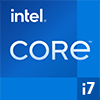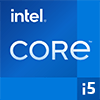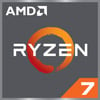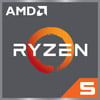
Intel Core i7-1165G7 vs Intel Core i7-1065G7
Last updated:
CPU comparison with benchmarks
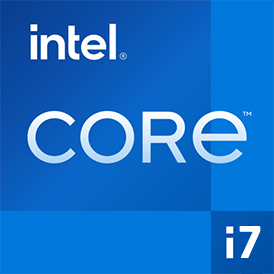
|
 |

|
| Intel Core i7-1165G7 | Intel Core i7-1065G7 | |
CPU comparisonIntel Core i7-1165G7 or Intel Core i7-1065G7 - which processor is faster? In this comparison we look at the differences and analyze which of these two CPUs is better. We compare the technical data and benchmark results.
The Intel Core i7-1165G7 has 4 cores with 8 threads and clocks with a maximum frequency of 4.70 GHz. Up to 64 GB of memory is supported in 2 memory channels. The Intel Core i7-1165G7 was released in Q3/2020. The Intel Core i7-1065G7 has 4 cores with 8 threads and clocks with a maximum frequency of 3.90 GHz. The CPU supports up to 64 GB of memory in 2 memory channels. The Intel Core i7-1065G7 was released in Q3/2019. |
||
| Intel Core i7 (298) | Family | Intel Core i7 (298) |
| Intel Core i 1100G/11000U (19) | CPU group | Intel Core i 1000G/10000U (19) |
| 11 | Generation | 10 |
| Tiger Lake U | Architecture | Ice Lake U |
| Mobile | Segment | Mobile |
| -- | Predecessor | -- |
| -- | Successor | -- |
|
|
||
CPU Cores and Base FrequencyThe Intel Core i7-1165G7 has 4 CPU cores and can calculate 8 threads in parallel. The clock frequency of the Intel Core i7-1165G7 is 2.80 GHz (4.70 GHz) while the Intel Core i7-1065G7 has 4 CPU cores and 8 threads can calculate simultaneously. The clock frequency of the Intel Core i7-1065G7 is at 1.30 GHz (3.90 GHz). |
||
| Intel Core i7-1165G7 | Characteristic | Intel Core i7-1065G7 |
| 4 | Cores | 4 |
| 8 | Threads | 8 |
| normal | Core architecture | normal |
| Yes | Hyperthreading | Yes |
| No | Overclocking ? | No |
| 2.80 GHz | Frequency | 1.30 GHz |
| 4.70 GHz | Turbo Frequency (1 Core) | 3.90 GHz |
| 4.10 GHz | Turbo Frequency (All Cores) | 3.50 GHz |
Internal GraphicsThe Intel Core i7-1165G7 or Intel Core i7-1065G7 has integrated graphics, called iGPU for short. The iGPU uses the system's main memory as graphics memory and sits on the processor's die. |
||
| Intel Iris Xe Graphics 96 (Tiger Lake) | GPU | Intel Iris Plus Graphics G7 |
| 0.40 GHz | GPU frequency | 0.30 GHz |
| 1.30 GHz | GPU (Turbo) | 0.50 GHz |
| 12 | GPU Generation | 11 |
| 10 nm | Technology | 14 nm |
| 4 | Max. displays | 3 |
| 96 | Compute units | 64 |
| 768 | Shader | 512 |
| No | Hardware Raytracing | No |
| No | Frame Generation | No |
| 32 GB | Max. GPU Memory | 32 GB |
| 12 | DirectX Version | 12 |
Hardware codec supportA photo or video codec that is accelerated in hardware can greatly accelerate the working speed of a processor and extend the battery life of notebooks or smartphones when playing videos. |
||
| Intel Iris Xe Graphics 96 (Tiger Lake) | GPU | Intel Iris Plus Graphics G7 |
| Decode / Encode | Codec h265 / HEVC (8 bit) | Decode / Encode |
| Decode / Encode | Codec h265 / HEVC (10 bit) | Decode / Encode |
| Decode / Encode | Codec h264 | Decode / Encode |
| Decode / Encode | Codec VP9 | Decode / Encode |
| Decode | Codec VP8 | Decode / Encode |
| Decode | Codec AV1 | No |
| Decode / Encode | Codec AVC | Decode / Encode |
| Decode | Codec VC-1 | Decode |
| Decode / Encode | Codec JPEG | Decode / Encode |
Memory & PCIeThe Intel Core i7-1165G7 can use up to 64 GB of memory in 2 memory channels. The maximum memory bandwidth is 51.2 GB/s. The Intel Core i7-1065G7 supports up to 64 GB of memory in 2 memory channels and achieves a memory bandwidth of up to 59.6 GB/s. |
||
| Intel Core i7-1165G7 | Characteristic | Intel Core i7-1065G7 |
| DDR4-3200 | Memory | LPDDR4-3733, DDR4-3200 |
| 64 GB | Max. Memory | 64 GB |
| 2 (Dual Channel) | Memory channels | 2 (Dual Channel) |
| 51.2 GB/s | Max. Bandwidth | 59.6 GB/s |
| No | ECC | No |
| 5.00 MB | L2 Cache | -- |
| 12.00 MB | L3 Cache | 8.00 MB |
| 4.0 | PCIe version | 3.0 |
| 4 | PCIe lanes | 16 |
| 7.9 GB/s | PCIe Bandwidth | 15.8 GB/s |
Thermal ManagementThe thermal design power (TDP for short) of the Intel Core i7-1165G7 is 15 W, while the Intel Core i7-1065G7 has a TDP of 15 W. The TDP specifies the necessary cooling solution that is required to cool the processor sufficiently. |
||
| Intel Core i7-1165G7 | Characteristic | Intel Core i7-1065G7 |
| 15 W | TDP (PL1 / PBP) | 15 W |
| 64 W @ 28 s | TDP (PL2) | -- |
| 28 W | TDP up | 25 W |
| 12 W | TDP down | 12 W |
| 100 °C | Tjunction max. | 100 °C |
Technical detailsThe Intel Core i7-1165G7 is manufactured in 10 nm and has 17.00 MB cache. The Intel Core i7-1065G7 is manufactured in 10 nm and has a 8.00 MB cache. |
||
| Intel Core i7-1165G7 | Characteristic | Intel Core i7-1065G7 |
| 10 nm | Technology | 10 nm |
| Monolithic | Chip design | Monolithic |
| x86-64 (64 bit) | Instruction set (ISA) | x86-64 (64 bit) |
| SSE4.1, SSE4.2, AVX2, AVX-512 | ISA extensions | SSE4.1, SSE4.2, AVX2 |
| BGA 1526 | Socket | BGA 1526 |
| VT-x, VT-x EPT, VT-d | Virtualization | VT-x, VT-x EPT, VT-d |
| Yes | AES-NI | Yes |
| Windows 10, Windows 11, Linux | Operating systems | Windows 10, Windows 11, Linux |
| Q3/2020 | Release date | Q3/2019 |
| 426 $ | Release price | 390 $ |
| show more data | show more data | |
Rate these processors
Average performance in benchmarks
⌀ Single core performance in 4 CPU benchmarks
⌀ Multi core performance in 6 CPU benchmarks
Cinebench R23 (Single-Core)
Cinebench R23 is the successor of Cinebench R20 and is also based on the Cinema 4 Suite. Cinema 4 is a worldwide used software to create 3D forms. The single-core test only uses one CPU core, the amount of cores or hyperthreading ability doesn't count.
|
|
Intel Core i7-1165G7
4C 8T @ 4.70 GHz |
||
|
|
Intel Core i7-1065G7
4C 8T @ 3.90 GHz |
||
Cinebench R23 (Multi-Core)
Cinebench R23 is the successor of Cinebench R20 and is also based on the Cinema 4 Suite. Cinema 4 is a worldwide used software to create 3D forms. The multi-core test involves all CPU cores and taks a big advantage of hyperthreading.
|
|
Intel Core i7-1165G7
4C 8T @ 4.10 GHz |
||
|
|
Intel Core i7-1065G7
4C 8T @ 3.50 GHz |
||
Geekbench 5, 64bit (Single-Core)
Geekbench 5 is a cross plattform benchmark that heavily uses the systems memory. A fast memory will push the result a lot. The single-core test only uses one CPU core, the amount of cores or hyperthreading ability doesn't count.
|
|
Intel Core i7-1165G7
4C 8T @ 4.70 GHz |
||
|
|
Intel Core i7-1065G7
4C 8T @ 3.90 GHz |
||
Geekbench 5, 64bit (Multi-Core)
Geekbench 5 is a cross plattform benchmark that heavily uses the systems memory. A fast memory will push the result a lot. The multi-core test involves all CPU cores and taks a big advantage of hyperthreading.
|
|
Intel Core i7-1165G7
4C 8T @ 4.10 GHz |
||
|
|
Intel Core i7-1065G7
4C 8T @ 3.50 GHz |
||
Geekbench 6 (Single-Core)
Geekbench 6 is a benchmark for modern computers, notebooks and smartphones. What is new is an optimized utilization of newer CPU architectures, e.g. based on the big.LITTLE concept and combining CPU cores of different sizes. The single-core benchmark only evaluates the performance of the fastest CPU core, the number of CPU cores in a processor is irrelevant here.
|
|
Intel Core i7-1165G7
4C 8T @ 4.70 GHz |
||
|
|
Intel Core i7-1065G7
4C 8T @ 3.90 GHz |
||
Geekbench 6 (Multi-Core)
Geekbench 6 is a benchmark for modern computers, notebooks and smartphones. What is new is an optimized utilization of newer CPU architectures, e.g. based on the big.LITTLE concept and combining CPU cores of different sizes. The multi-core benchmark evaluates the performance of all of the processor's CPU cores. Virtual thread improvements such as AMD SMT or Intel's Hyper-Threading have a positive impact on the benchmark result.
|
|
Intel Core i7-1165G7
4C 8T @ 4.10 GHz |
||
|
|
Intel Core i7-1065G7
4C 8T @ 3.50 GHz |
||
Cinebench R20 (Single-Core)
Cinebench R20 is the successor of Cinebench R15 and is also based on the Cinema 4 Suite. Cinema 4 is a worldwide used software to create 3D forms. The single-core test only uses one CPU core, the amount of cores or hyperthreading ability doesn't count.
|
|
Intel Core i7-1165G7
4C 8T @ 4.70 GHz |
||
|
|
Intel Core i7-1065G7
4C 8T @ 3.90 GHz |
||
Cinebench R20 (Multi-Core)
Cinebench R20 is the successor of Cinebench R15 and is also based on the Cinema 4 Suite. Cinema 4 is a worldwide used software to create 3D forms. The multi-core test involves all CPU cores and taks a big advantage of hyperthreading.
|
|
Intel Core i7-1165G7
4C 8T @ 4.10 GHz |
||
|
|
Intel Core i7-1065G7
4C 8T @ 3.50 GHz |
||
iGPU - FP32 Performance (Single-precision GFLOPS)
The theoretical computing performance of the internal graphics unit of the processor with simple accuracy (32 bit) in GFLOPS. GFLOPS indicates how many billion floating point operations the iGPU can perform per second.
|
|
Intel Core i7-1165G7
Intel Iris Xe Graphics 96 (Tiger Lake) @ 1.30 GHz |
||
|
|
Intel Core i7-1065G7
Intel Iris Plus Graphics G7 @ 0.50 GHz |
||
Estimated results for PassMark CPU Mark
Some of the CPUs listed below have been benchmarked by CPU-monkey. However the majority of CPUs have not been tested and the results have been estimated by a CPU-monkey’s secret proprietary formula. As such they do not accurately reflect the actual Passmark CPU mark values and are not endorsed by PassMark Software Pty Ltd.
|
|
Intel Core i7-1165G7
4C 8T @ 4.10 GHz |
||
|
|
Intel Core i7-1065G7
4C 8T @ 3.50 GHz |
||
CPU-Z Benchmark 17 (Multi-Core)
The CPU-Z benchmark measures a processor's performance by measuring the time it takes the system to complete all benchmark calculations. The faster the benchmark is completed, the higher the score.
|
|
Intel Core i7-1165G7
4C 8T @ 2.80 GHz |
||
|
|
Intel Core i7-1065G7
4C 8T @ 1.30 GHz |
||
Cinebench 2024 (Single-Core)
The Cinebench 2024 benchmark is based on the Redshift rendering engine, which is also used in Maxon's 3D program Cinema 4D. The benchmark runs are each 10 minutes long to test whether the processor is limited by its heat generation.
|
|
Intel Core i7-1165G7
4C 8T @ 4.70 GHz |
||
|
|
Intel Core i7-1065G7
4C 8T @ 3.90 GHz |
||
Cinebench 2024 (Multi-Core)
The Multi-Core test of the Cinebench 2024 benchmark uses all cpu cores to render using the Redshift rendering engine, which is also used in Maxons Cinema 4D. The benchmark run is 10 minutes long to test whether the processor is limited by its heat generation.
|
|
Intel Core i7-1165G7
4C 8T @ 4.70 GHz |
||
|
|
Intel Core i7-1065G7
4C 8T @ 3.90 GHz |
||
Blender 3.1 Benchmark
In the Blender Benchmark 3.1, the scenes "monster", "junkshop" and "classroom" are rendered and the time required by the system is measured. In our benchmark we test the CPU and not the graphics card. Blender 3.1 was presented as a standalone version in March 2022.
|
|
Intel Core i7-1165G7
4C 8T @ 4.10 GHz |
||
|
|
Intel Core i7-1065G7
4C 8T @ 3.50 GHz |
||
Blender 2.81 (bmw27)
Blender is a free 3D graphics software for rendering (creating) 3D bodies, which can also be textured and animated in the software. The Blender benchmark creates predefined scenes and measures the time (s) required for the entire scene. The shorter the time required, the better. We selected bmw27 as the benchmark scene.
|
|
Intel Core i7-1165G7
4C 8T @ 4.10 GHz |
||
|
|
Intel Core i7-1065G7
4C 8T @ 3.50 GHz |
||
CPU-Z Benchmark 17 (Single-Core)
The CPU-Z benchmark measures a processor's performance by measuring the time it takes the system to complete all benchmark calculations. The faster the benchmark is completed, the higher the score.
|
|
Intel Core i7-1165G7
4C 8T @ 4.10 GHz |
||
|
|
Intel Core i7-1065G7
4C 8T @ 3.50 GHz |
||
Cinebench R15 (Single-Core)
Cinebench R15 is the successor of Cinebench 11.5 and is also based on the Cinema 4 Suite. Cinema 4 is a worldwide used software to create 3D forms. The single-core test only uses one CPU core, the amount of cores or hyperthreading ability doesn't count.
|
|
Intel Core i7-1165G7
4C 8T @ 4.70 GHz |
||
|
|
Intel Core i7-1065G7
4C 8T @ 3.90 GHz |
||
Cinebench R15 (Multi-Core)
Cinebench R15 is the successor of Cinebench 11.5 and is also based on the Cinema 4 Suite. Cinema 4 is a worldwide used software to create 3D forms. The multi-core test involves all CPU cores and taks a big advantage of hyperthreading.
|
|
Intel Core i7-1165G7
4C 8T @ 4.10 GHz |
||
|
|
Intel Core i7-1065G7
4C 8T @ 3.50 GHz |
||
Devices using this processor |
|
| Intel Core i7-1165G7 | Intel Core i7-1065G7 |
| Unknown | Microsoft Surface Laptop 3 |
Comparison of the two processors
A direct comparison of the Intel Core i7-1165G7 and the one year older Intel Core i7-1065G7 shows which development is possible during this time. Intel gets significantly more out of the direct successor with the same power consumption of 15w.Both processors have an integrated graphics card, as is common with CPUs for mobile devices.
The Intel i7-1165G7, released in the 3rd quarter of 2020, is significantly faster than its predecessor with a clock rate of 2.80-4.70 GHz (on one core) and a turbo clock of 4.10 GHz on all cores.
The processor has 4 cores and is also manufactured in 10nm. With this high-end mobile solution, Intel has not only focused on simply increasing the performance values, but has also given this CPU some new features that clearly differentiate it from its predecessor in a direct comparison.
The Intel Core i7-1165G7, which is manufactured in the Tiger Lake UP3 architecture, has improvements in the PCIe connection. It is connected with PCIe 4.0 instead of version 3.0.
DDR4-3200, LPDDR4X-4266 memory up to a maximum expansion level of 64 GB is used.
The Core i7-1065G7 from the 3rd quarter of 2019 is significantly below the successor with a clock frequency of 1.30-3.90 GHz. The integrated graphics card, the Intel Iris Plus Graphics 940, is of course beaten by the successor in the Core i7-1165G7.
The processor manufactured in the Ice Lake U architecture is also built into the BGA 1526 socket, but has 16 PCIe lines which, as mentioned, are only connected with PCIe version 3.0.
As already indicated, you can clearly see the difference in the benchmark comparison.
In the Cinebench R20 single-core benchmark alone, the Intel Core i7-1165G7 is around 20% above the Intel Core i7-1065G7.
In the multi-core benchmark even 27% over the direct predecessor.
Popular comparisons containing this CPUs
back to index



